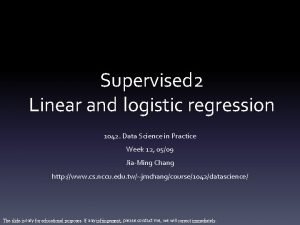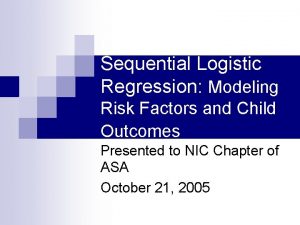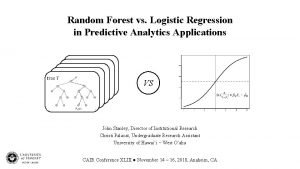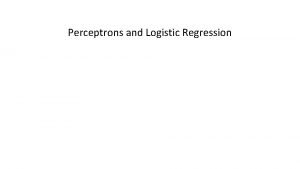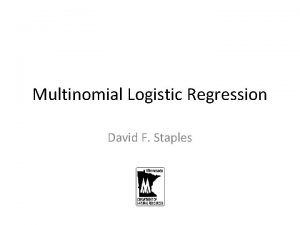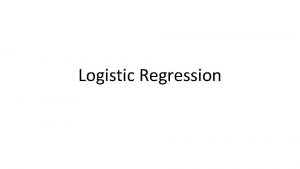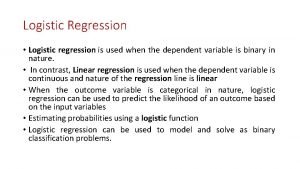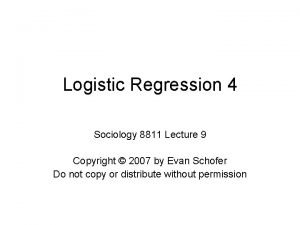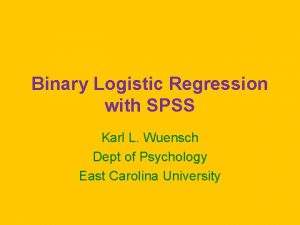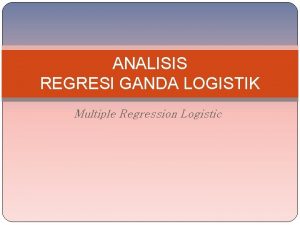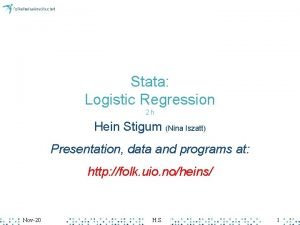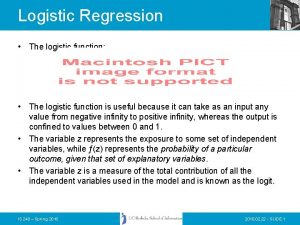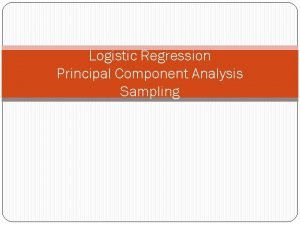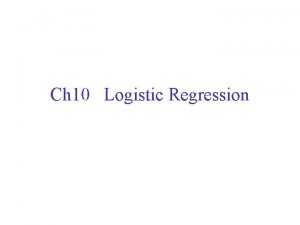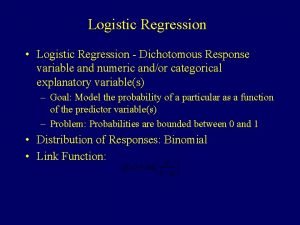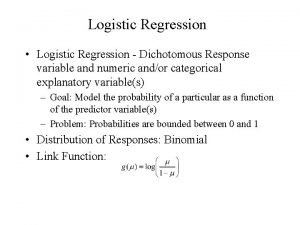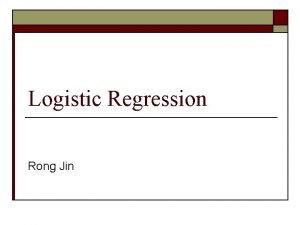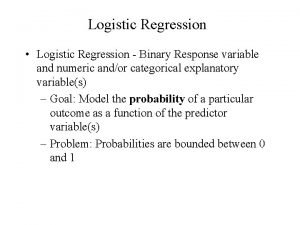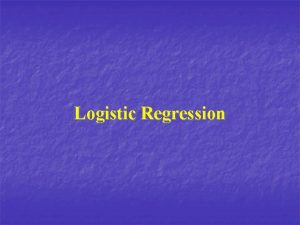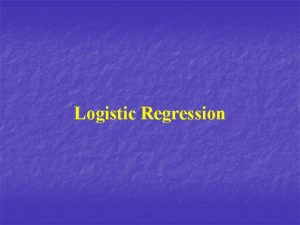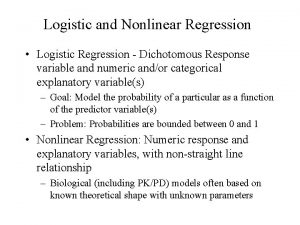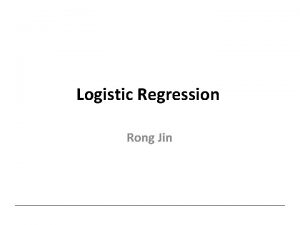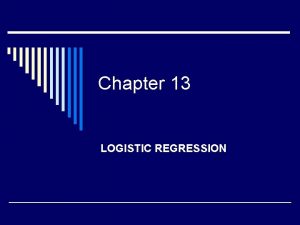Week 9 Homework 8 Use logistic regression to
















- Slides: 16

Week 9

Homework 8 • Use logistic regression to predict gene expression using genomics assays in GM 12878. • Train using gradient descent. • Label: CAGE gene expression -"expressed"/"non-expressed" • Features: Histone modifications and DNA accessibility.

Intercept feature • Has value 1 for all genes. • Allows the model to assign a probability to a gene with all 0 -valued features. • Some treatments of logistic regression include an intercept feature into the model:

Homework 8 pseudocode • Initialize all theta_j's to zero • Until converged: – For each training gene x: • For each feature j, compute gradient WRT x and add it to theta_j – Compute new log likelihood • Compute P(Y = 1|X) for testing gene.

Histone modifications • • • DNase: Open chromatin FAIRE: Open chromatin H 3 K 4 me 1: Active enhancers H 3 K 4 me 2: Active regulatory elements H 3 K 4 me 3: Active promoters H 3 K 9 ac: Active regulatory elements H 3 K 27 me 3: Repressed regions H 3 K 36 me 3: Active transcription H 4 K 20 me 1: Active transcription

Homework 9 • Use D-segment algorithm to find CNVs. • Input: Number of read starts at each genomic position (1, 2, >=3). • Use a Poisson model of read counts given copy number.

Performance measures for classification

Performance measures • • • True positives (TP) False positives (FP) True negatives (TN) False negatives (FN) Measures of performance: – Recall: TP/(TP+FN) – Precision: TP/(TP+FP) – Specificity: TN/(TN+FP) • Accuracy: (TP+TN)/(TP+TN+FP+FN)

Sensitivity/specificity tradeoff • There is a tradeoff between false positives and false negatives. • Two strategies for plotting tradeoff: – ROC curve – Precision-recall curve

Receiver-operator characteristic (ROC) curve Area under ROC curve (AUROC): Combined measure of performance based on ROC curve

Precision-recall curve Area under ROC curve (AUPR): Combined measure of performance based on PR curve

ROC vs. PR

Use a performance measure based on your application • All predictions (positive and negative) are equally important: Use accuracy. • Some number of follow-up tests are planned: Use recall among a fixed number of predictions. • Positive predictions will be published: Use recall at a fixed precision (i. e. 95%)

Measuring performance when multiple examples get the same score

Interpolating in an ROC curve

Interpolating in a PR curve
 Logistic regression vs linear regression
Logistic regression vs linear regression Logistic regression vs linear regression
Logistic regression vs linear regression Logistic regression residual deviance
Logistic regression residual deviance Sequential logistic regression
Sequential logistic regression Random forest spss
Random forest spss Perceptron logistic regression
Perceptron logistic regression Multinomial logistic regression
Multinomial logistic regression Cost function logistic regression
Cost function logistic regression Logistic regression andy field
Logistic regression andy field Logistic regression vs logit
Logistic regression vs logit Multinomial logistic regression
Multinomial logistic regression Logistic regression epidemiology
Logistic regression epidemiology Hosmer lemeshow test
Hosmer lemeshow test Logistic regression spss output
Logistic regression spss output Analisis regresi logistik berganda
Analisis regresi logistik berganda Logistic regression stata
Logistic regression stata Logistic regression stata
Logistic regression stata


